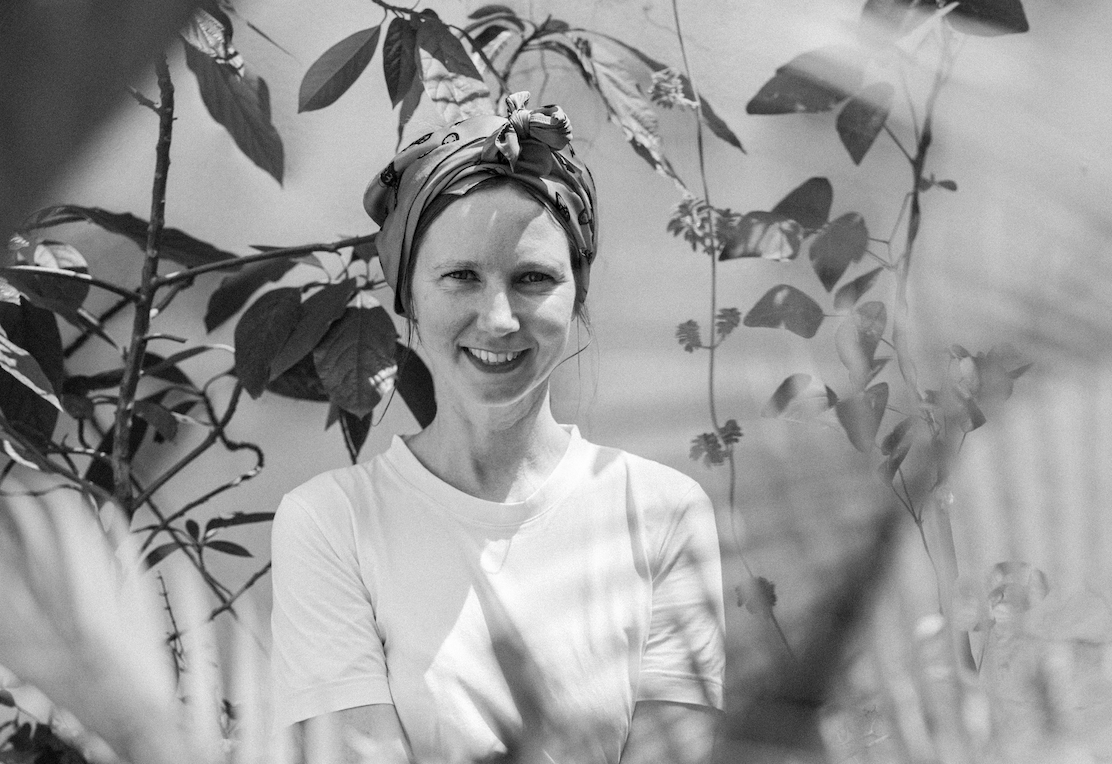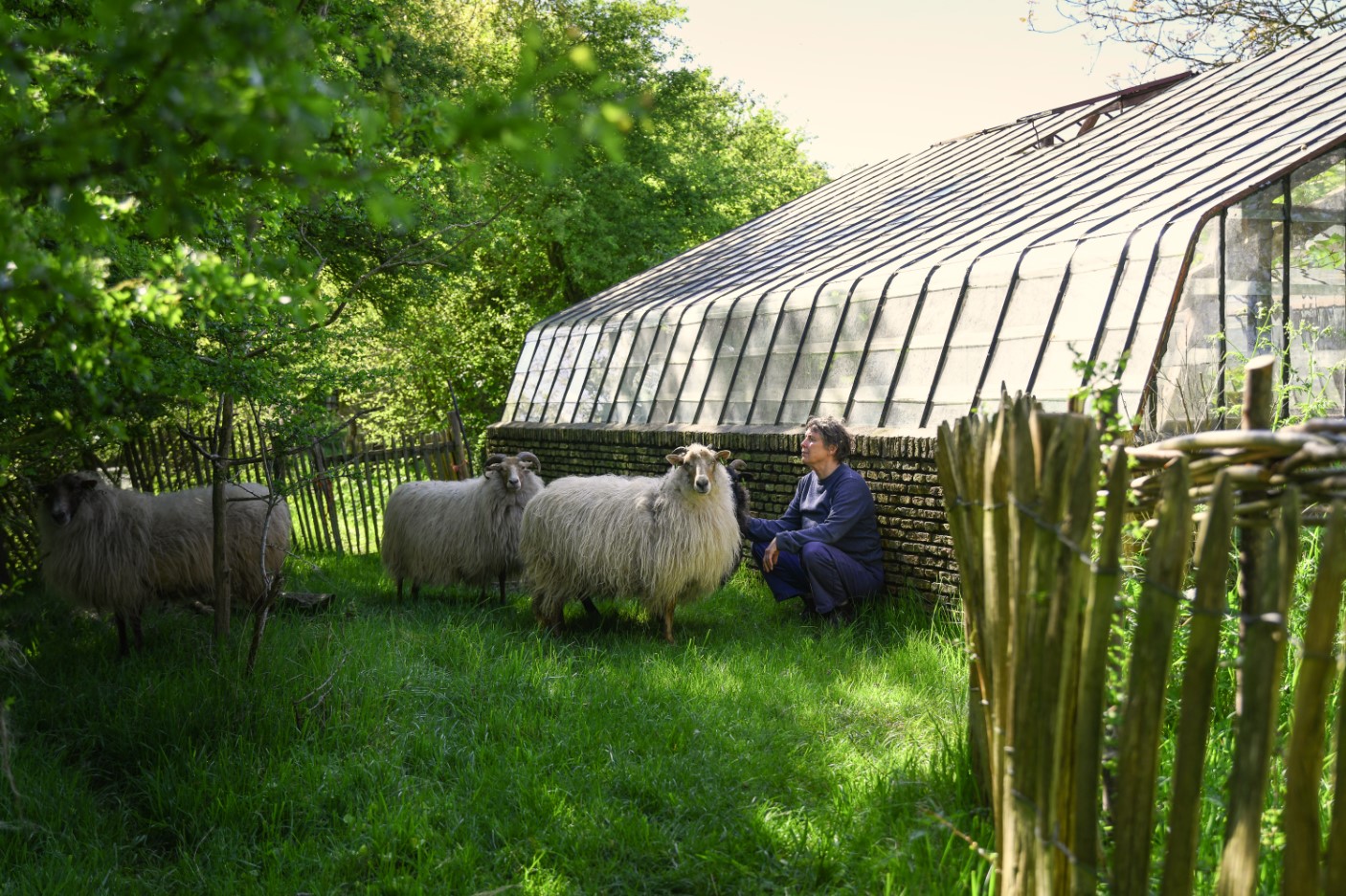► českou verzi článku najdete zde
Riikka studied design and, apart from her own projects, also enjoys working in teams designing installations for public spaces. She is also a curator, teaches at university and participates in other assignments of expertise such as artist committees. And she does archery - on the back of a horse. "I needed an activity during which I have to concentrate on the given moment, stop thinking about work, art, my ideas, so I started horseback archery. It teaches me to fully focus on one target at a time," she says excitedly.
She was invited to Prague by the Kuzebauch Gallery to put together an exhibition of works inspired by the human body. "After you turn forty, your body‘s warranty period is over," explains Latva-Somppi her own experience. "Your organs and joints stop regenerating and you start living the rest of your life with smaller or larger pains and limitations. Fatal conditions are also more common. The Czech Lungs piece was inspired by my close friend suffering from lung cancer." The hand-painted lungs made of glass were created during last year’s International Glass Symposium in Nový Bor and are now part of the collection at Prague’s Museum of Decorative Arts.
"Despite my work having depth and touching topics which are not always joyful, it may come across as hyperbole and humour, and that is also good," she explains her approach. Another piece - The Emergency Call – depicts the painfull call she had to make when her mother died. But its message may be interpreted in several ways. "Some people see the large drop of blood dripping down from the receiver as a metaphor for torment caused by the difficulty to communicate, as pain coming from severed relationships, et cetera. "

Emergency Call, 2016 (foto: Aleksi Tikkala)
"Being part of the international glass-making community is great. In Finland, the division between design, craft and art is a bit more rigid, and when you are in between those categories, it is a bit complicated," she says of the situation in her own country. She used to experience crisis of artistic identity as a result and would worry what to call herself. "Now I simply do what I do, people can pigeonhole me how they like, I see myself as an author who works across categories. I am a sculptor who mostly uses glass." She calls her work art. The message of each individual piece is the main thing for her. "Art is a way of perceiving the world irrationally. My work has been shown as fine art, craft and glass art. It may be seen as material based, but it is not material bound. Any material that best suits to the content is good for me."
She is currently supported by a three year working grant from the Finnish Cultural foundation. "As I got the grant I decided to breath in and then start with a clean slate. I invited my colleague from Canada, Mervi Haapakoski, and we deliberately got into it without much planning or expectations for individual results in our project FORM FOLLOWS FUN aCTION. I believed that the process itself would lead us to a result and I wanted to immerse myself in creation and watch what emerges. During the process I returned to ceramics after twenty three years.
.avif)
Have more strings to your bow (foto: Marjo Ulvinen)
"She is showing a similarly open-minded approach to her upcoming exhibition in Galleria Huuto in Helsinki. "The original plan was to co-operate in an artistic process with a horse. At the beginning I sent them to the gallery the horse’s CV. It was an exhibition on the interactions between a horse and a human." Her partner in this project is Kristoffer, a 16-year-old Finnhorse. "The works in the exhibition deal with experiencing a horse and the feeling of shared presence. In the world of visual stimuli, seeing is given priority over other senses. In an experience of presence, visual sensations are not so dominating. Artworks in the exhibition can be experienced through the sense of hearing, smell, touch and balance," she says.
Riikka describes what is involved in the process of creative experimentation. Difficult start, the joy of work commencing and inspiration developing, then problems and difficult periods when the process or approach have to be changed. When you overcome all this, you get a huge reward in discovering new things and unexpected results. "I teach experimental design at The Aalto University and I lead my students in a similar way. I encourage them not to fix the final product in their heads, but to immerse into the process and let it lead them." Her students receive theoretical instruction, but should not feel limited in working with different materials and topics. "I try to inspire them to be bold and experiment as part of their projects. I also encourage team feedback so that they learn to communicate about creative work. When you keep everything to yourself and don’t share your ideas, you don’t get anything back and your journey is narrower," she adds.
Small comments on life in chosen material
During the interview, Riikka returns to a moment which has been present since the beginning of her creative career. "Small and seemingly ordinary moments are incredibly important, they are gone so quickly and never return. I try to live every little moment," she says and points to a butterfly circling our table, the atmosphere of our interview in the gallery’s garden, her feelings during few hours of doing nothing, waiting and expectations before the exhibition’s opening. "I felt it most strongly when my kids were small. The kids live in the now, they don’t worry about tomorrow. As a parent, you see the beauty of just perceiving the present. When they grow, you feel it was so quick and is never coming back. When a friend or a family member passes away, you mostly remember not formal and grand moments, but everyday situations and small moments you experienced together. "

"Uterine tubes made of glass are a start of something new, they are delicate, tender and see-through, but they lead to an aluminium can, beat-up, open, used and mundane, and that’s how it is," Riikka describes her Fertility/Utility piece and adds that if she made it twenty years ago, before giving birth to four children, it would probably look different. (foto: Aleksi Tikkala)
Riikka sees her roles of mother and artist as a beneficial connection. "I have a studio in our house, so I could be close to my kids and work at the same time. If you make art of something that is really close to you in everyday life at the moment, you are more likely to get deeper in your expression. When the children were small, they were often involved in the process. I have a series of chewing-gum boys, which was created during a holiday with my son. He was trying to blow the biggest chewing-gum bubbles and when he had one, he wanted to call me to come have a look and the bubble burst, " she returns to the topic of fleeting moments.
The artist also cast her daughter’s feet in bronze and placed them behind a curtain. "She was six at the time and very quiet, she didn’t have many friends and I was worried about it. In this piece, I was expressing how I thought she must have been feeling when she hides into a curtain rather than going to play with others, there was distress and loneliness in that," she describes. The piece was sold under unexpected circumstances. "The woman who bought it was reminded of her father, with whom she used to play hide and seek, one of her hiding places being the curtains. It reminded her of happy times during her childhood, so she bought the piece as the first work of art in her life. The piece was expensive because of the materials used, but she went straight to a bank to take a loan and take it home."
But that was an exception. "Selling art doesn’t pay the bills. There is only a handful of glass collectors in Finland and they are often more interested in classic glass pieces by older generations. If your work ends up in a renowned collection it is a great honor and professional recognition. Hearing that people have been deeply touched by the work is however an even greater reward.

I am (2011) (foto: Minä Olen)
Most Riikka’s pieces are wall-mounted. "I don’t like plinths, with them, people walk around a piece on their tiptoes and perceive it as some kind of uber-art. When I hang a piece on a wall, I am using something that’s already there anyway," she explains. "It’s similar when I have an assignment for something in a public space. In a team with architects, artists and urban planners, we were recently considering a busy public space in Vantaa. I designed the art work on a guidance path which serves as a navigation aid for the visually impaired."
She ads that there had to be a guidance path and this piece of art, besides helping the visually impaired, is also enjoyed by seeing people who cross the space and look at what is under their feet. She also describes another applied arts assignment: "We fret over all aesthetical details of a public space and then ruin it by huge plastic signs with P for parking on them. In the same project I transformed parking signs into art. I made them out of weathering steel and added word art with lighting which can be discovered in the dark."
In Finland, they have a rule that 1 % of a budget for every public building must be spent on art outside, inside, or in the courtyard, for instance. "There are residential quarters where this principle is part of the planning now. Construction companies engage artists already during the design phase. Sometimes they are selected by the architect, at other times there is a tender, or they choose the piece from a portfolio bank, " describes Riikka Latva-Somppi. She herself was asked to provide art for public spaces by an architect and also by the Vantaa Art Museum and would like to participate in similar projects in the future.
Text: Kateřina Zvelebilová, Translation: Patricie Klimešová Vlachová, Portrait photo: Aleksi Tikkala




